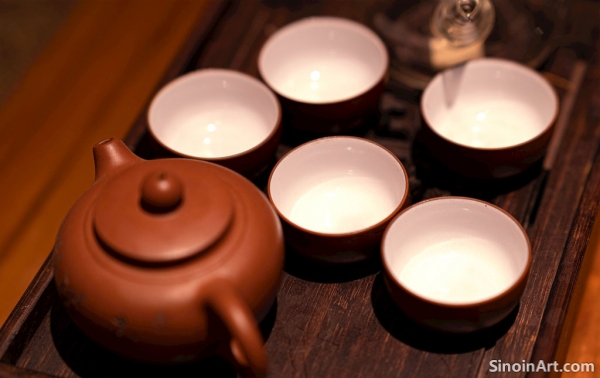The Health Benefits of Chinese Tea: More Than Just a Beverage
|
Chinese tea has been recognized for its health-promoting properties for centuries. Beyond its refreshing and enjoyable taste, the diverse range of Chinese teas offer a wide array of health benefits. From the antioxidants in green tea to the digestive benefits of Pu-erh, tea is much more than just a beverage in Chinese culture. The history of Chinese tea is deeply intertwined with traditional medicine, and the consumption of tea is regarded as a way to maintain health and promote well-being.  Green tea, known for its high content of catechins, is renowned for its antioxidant and anti-inflammatory properties. These powerful antioxidants can help protect the body against free radicals and potentially reduce the risk of chronic diseases. Studies also suggest that green tea can help boost metabolism and aid in weight management. Its caffeine content provides a gentle energy lift without the jitters associated with coffee.  Black tea, another popular variety, also offers health benefits, particularly for the cardiovascular system. The flavonoids in black tea can help improve blood vessel function and lower blood pressure. While black tea does contain caffeine, it is often consumed in moderation and considered beneficial. The health benefits often vary depending on the processing and type of the tea.  Pu-erh tea, with its unique fermentation process, is recognized for its potential benefits for digestion and weight management. Studies have suggested that Pu-erh can help with breaking down fats and reducing cholesterol levels. White tea, with its minimal processing, retains many of its antioxidants, and is known for its gentle and refreshing nature. In conclusion, Chinese tea, with its diversity and range of properties, is a natural way to promote well-being. It offers a tasty and convenient way to incorporate health-enhancing compounds into your daily routine. The consumption of tea in China has always been tied to both enjoyment and health, a testament to its enduring value |
Tag : Chinese tea benefits, health benefits, antioxidants, green tea, Pu-erh tea, black tea
Related information
- The Delicate Art of Green Tea Production in China
- Tea and Health: Exploring the Wellness Benefits of Chinese Tea
- The Bold Flavors of Black Tea: Exploring Hong Cha
- Decoding the Types: A Guide to Chinese Tea Varieties
- The Art of Tea Pairing: Complementing Chinese Cuisine
Explore the delicate art of Chinese green tea production, from harvesting to processing. Learn about the different methods and why the timing of the harvest is critical for flavor and quality.
This article examines the various health benefits associated with drinking Chinese tea, discussing its antioxidant properties, potential impact on cardiovascular health, and its overall contribution to well-being.
This article explores the world of Chinese black tea (Hong Cha), examining its history, unique characteristics, and popular varieties, and offering brewing suggestions.
This article explores the diverse range of Chinese tea varieties, categorizing them by processing method and highlighting their unique characteristics, flavors, and aromas.
Explore the art of tea pairing within the context of Chinese cuisine. Learn which teas best complement different dishes and how the right tea can enhance the overall dining experience.